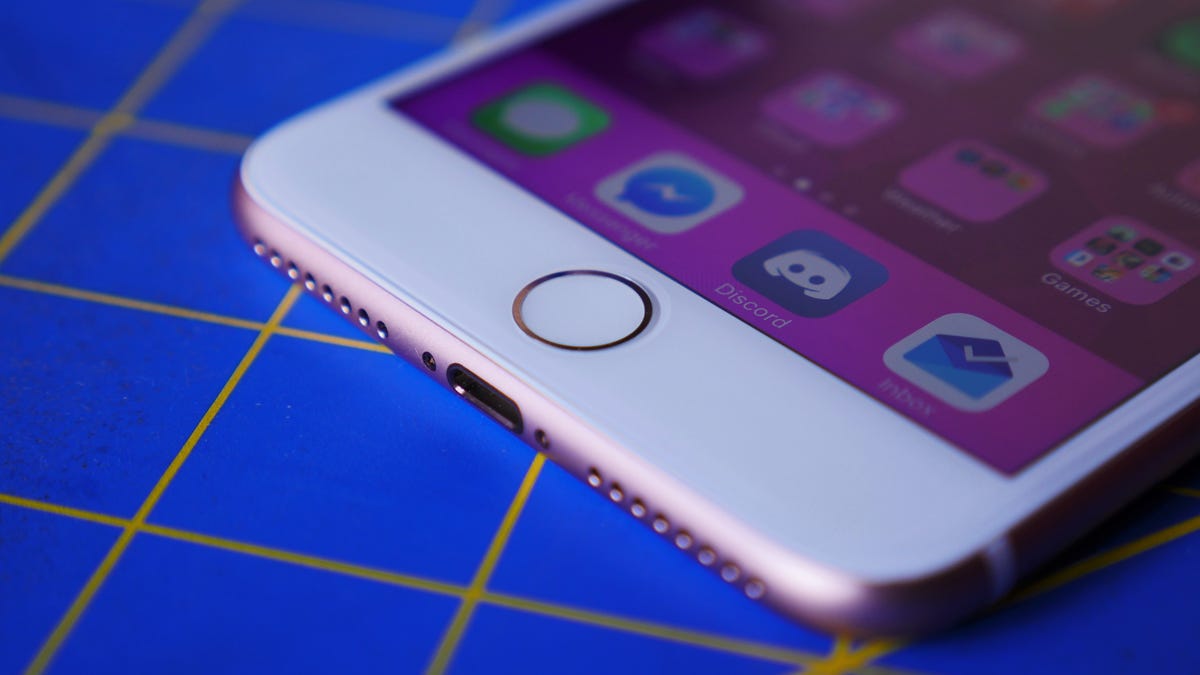What you should know about the new home button on the iPhone 7
The new iPhone 7 and 7 Plus both come with a new home button that simulates clicks but doesn't actually move. It also has a couple of quirks. Here's what you should know about it.

While the iPhone 7 may not look all that different from its predecessor, there are some fairly significant changes to be aware of. You've likely heard that there is no headphone jack or that the iPhone 7 Plus got a second camera around back. But a new feature that is causing some concerns for people is the new home button.
Not really a button
While it looks and feels like a button, it's not a moving button like before. Instead, it's just a touch-sensitive area with a fingerprint reader, and it's powered by a taptic engine, much like the one used in the trackpad on the 12-inch MacBook. What you feel as a button click and depression is actually just an illusion, like the vibrate you feel when you Force Touch on the screen or type on certain soft keyboards.
The illusion is pretty convincing, but you may notice a few things about the new home button:
- Pressing the new home button is easier than before. It's more sensitive than the old one and doesn't actually need to move to register a click.
- You can no longer use your fingernail. This is a technique many adopted to "slow down" how fast the fingerprint unlock was on previous models, which would often shoot you past the lock screen before you could read any notifications. Clicking the button with your fingernail would light up the screen without unlocking the phone. This issue is solved both with Raise to Wake and the newer, more confusing lock screen.
- Likewise, using the home button won't work with most gloves -- even some capacitive gloves specifically designed to work with smartphones -- or inside cases that cover the button. Some capacitive gloves do seem to work, but not all. So in addition to needing new headphones or opting for the adapter, you may also need to upgrade your gloves this winter.
Advantages of a solid state button
Being a software simulation instead moving hardware comes with its advantages.
For starters, it means fewer moving parts. Alongside cracked screens, the home button was one of the first things to fail on previous models, as it's typically used a lot more than the volume or power buttons. By making it a solid state button, it should be less likely to fail.
Additionally, it means you can change how the button feels or acts.
Choose your click
During the initial setup of the iPhone 7 and iPhone 7 Plus, you come across the option to Choose your click. This allows you to adjust the intensity of the simulated home button click. There are three options to choose from: light (1), medium (2) and heavy (3) clicks.
If, like me, you blew past this option during the initial setup, you can get back to it to change your preference by going to Settings > General > Home Button.
Change the click speed
Since it's now much easier to press the home button, you may also notice that you're able to double- and triple-click it much faster. If in the past you slowed down the click speed in Accessibility settings, you may want to switch back to the default setting to reduce accidental double-clicks.
Go to Settings > General > Accessibility > Home Button and tap on the three options -- Default, Slow and Slowest -- to preview how fast you need to click the home button for it to register as a double- or triple- click.

